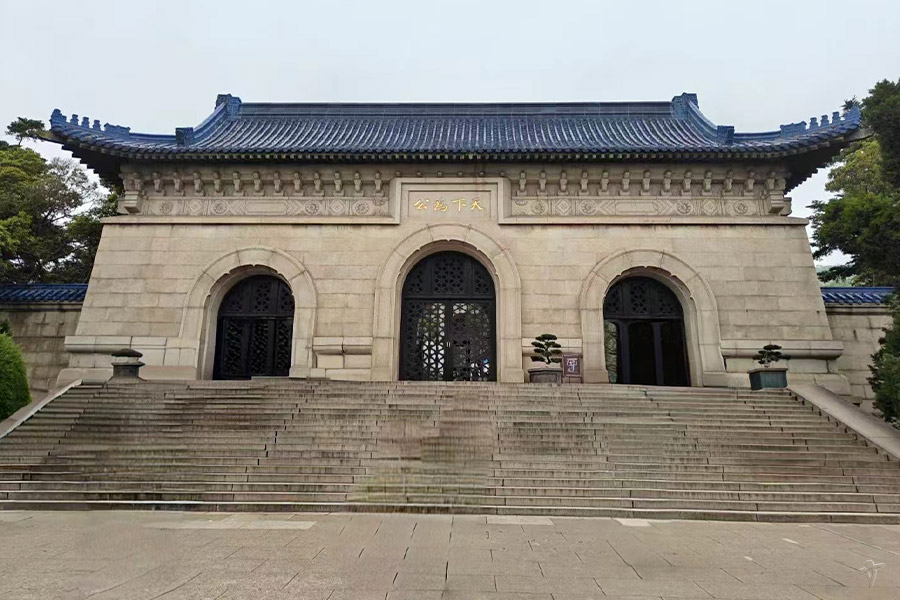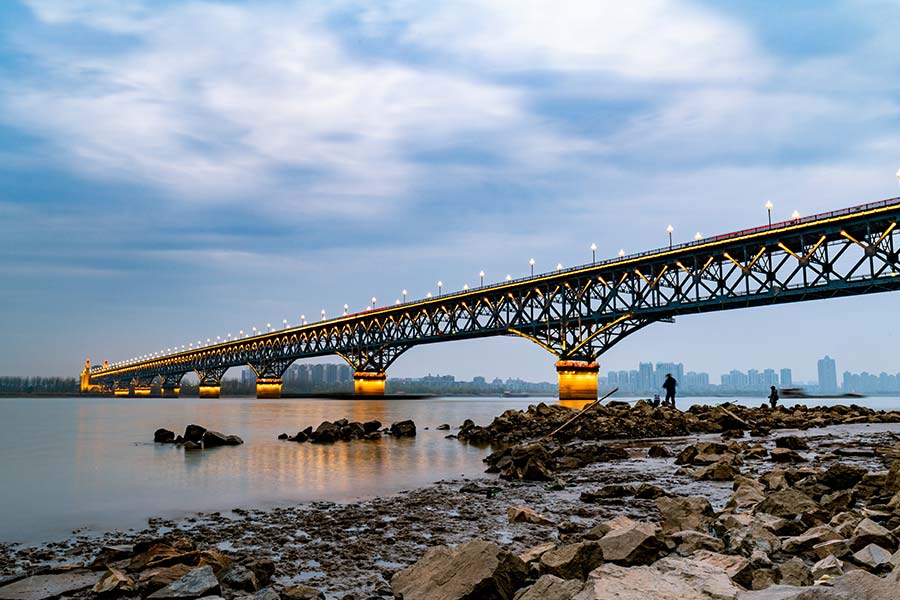Dr.Sun Yat-sen's Mausoleum

Chinese name: 中山陵(Zhongshan ling).
Location: on the Zhong Mountain Scenic Area(钟山风景区), at the south side of Zijin Mountain (紫金山), east suburb of Nanjing City, Jiangsu Province.
Opening time: 08:30-17:00 (The Sacrificial Hall and the Burial Room are closed every Monday).
Entrance fees:
-The mausoleum itself is free to visit (including Fraternity Square, the Mausoleum Passage, the Stele Pavilion, the Sacrificial Hall and the Burial Room) and only 10,000 tickets are provided per day;
- Ticket of the Open-air Music Hall: CNY10.
How to get there:
-Take bus No.9 or tourist bus No.1, 2 or 3 and debus at the station of Dr. Sun Yat-sen's Mausoleum, then go to the site by tourist vehicle or on foot;
-Take subway Line 2 and get off at the station of Dr. Sun Yat-sen's Mausoleum, and then take a tourist vehicle to the site.
Best time for visit: spring and autumn.
Travel Tips:
After visiting Dr. Sun Yat-sen's Mausoleum, visitors may also pay a visit to some attractions nearby, e.g. Ming Xiaoling Mausoleum, Linggu Temple, by sightseeing bus, battery car or small train.
Introduction to Dr. Sun Yat-sen's Mausoleum
Covering an area of more than 80,000 square meters, Dr. Sun Yat-sen's Mausoleum, which is regarded as "the greatest mausoleum in modern architectural history of China", is the mausoleum of Dr. Sun Yat-sen (1866-1925), the great forerunner of the Chinese democratic revolution. It is Dr. Sun that ended the 2000-year-old feudal monarchy system of China and started the Chinese democratic revolution.
The construction of Dr. Sun Yat-sen's Mausoleum started in 1926 and completed in 1929. In 1961, the mausoleum was approved to be one of the important historic sites under national protection. With important historical significance, magnificent architecture and beautiful scenery, it has been being one of the most famous tourist destinations in Nanjing City.
Major constructions of Dr. Sun Yat-sen's Mausoleum
The whole scenic area of Dr. Sun Yat-sen's Mausoleum represents a shape of "alarm bell" when seen from the air, symbolizing Dr. Sun Yat-sen's reminding Chinese people of fighting against oppression. The major constructions of Dr. Sun Yat-sen's Mausoleum lies along the central axis line from south to north, well presenting Chinese traditional architectural style.
1. Square
Walking along the marble road, visitors will arrive at half-moon square in the south of the Mausoleum. It is understated and modest, while endowing grandeur to the Mausoleum.
2. Stone Archway
At the entrance of the mausoleum, there is a great granite archway on which two golden Chinese characters "博爱"(Bo Ai), meaning "universal love", are written.
3. Tablet Pavilion
Walking through the archway, there is a passage-way of 375 meters long and 40 meters wide. At the end of passage-way stands the doorway of the mausoleum and on the lintel of it is written four Chinese characters "天下为公 (Tian Xia Wei Gong)", literally "Justice for all the people". These four inscribed characters were written by Dr. Sun Yat-sen himself, which fully explains what he struggled for during his life.
4. Memorial Hall
Climbing the stairs upward, the Memorial Hall is the next encounter. It is the highest and central place of the mausoleum. Being 30 meters long, 25 meters wide and 29 meters high, the hall is the Mausoleum's main construction combining both Chinese and western architectures. At the southern part of the hall there are three arch-gates on the lintel of which are respectively inscribed "民族 (nationalism)", "民权(democracy)" and "民生 (people's livelihood)". Entering the hall, a 5.6-meter-high stone statue of Dr. Sun Yat-sen, who wears a long gown with an open book on his lap, sits in the center. At the foot of the statue six embossments vividly show Dr. Sun Yat-sen's glorious revolution in China.
5. The Mausoleum
Dr. Sun Yat-sen's tomb lies behind the Memorial Hall. The whole mausoleum is a hemispherical in shape and the marble coffin of Dr. Sun Yat-sen is set in the center of the chamber. His statue rests atop the coffin.
Other Attractions of Dr. Sun Yat-sen
1. Memorial Hall
Memorial Hall, formerly known as the "Canon House", is located in the woods between Dr. Sun Yat-sen's Mausoleum and Linggu Temple (灵谷寺). The Memorial Hall collects some cherish photos and classic works of Dr. Sun Yat-sen. In front of the hall there is a 2.6-meter-high bronze statue of Dr. Sun Yat-sen. Behind the hall there is a 125-meter-long veranda, on the wall of which is inscribed "Three Principles of the People" in full written by Dr. Sun Yat-sen.
2. Zhongshan Academic Hall
Zhongshan Academic Hall, which is a palace-like building of two storeys, was built in November 1994, mainly used for academic researches and cultural exchanges of commemorating the giant Dr. Sun Yat-sen. On the first floor, a bust of Dr. Sun Yat-sen is placed in the middle. In the west room, there are laying out various versions of Dr. Sun Yat-sen's works, the academic study works about Dr. Sun Yat-sen and the books about Dr. Sun Yat-sen's Mausoleum; many photos about Dr. Sun Yat-sen in different eras are hanging on the walls of the west room. On the second floor, there is a reception room in which the records of Dr. Sun Yat-sen's speech are playing.
Around the mausoleum there are also many other memorial constructions such as the Open-air Music Hall, Waxwork Home of Democratic Revolution, Liuhui Pavilion, Xingjian Pavilion and so on.
Quick Questions
Our team is waiting for your questions. Please feel free to ask us any questions you might have about our China package tours, Chinese culture, or the sites available. We will gladly help you with any special needs you might have and all questions, like our trip designing is completely free of charge.





